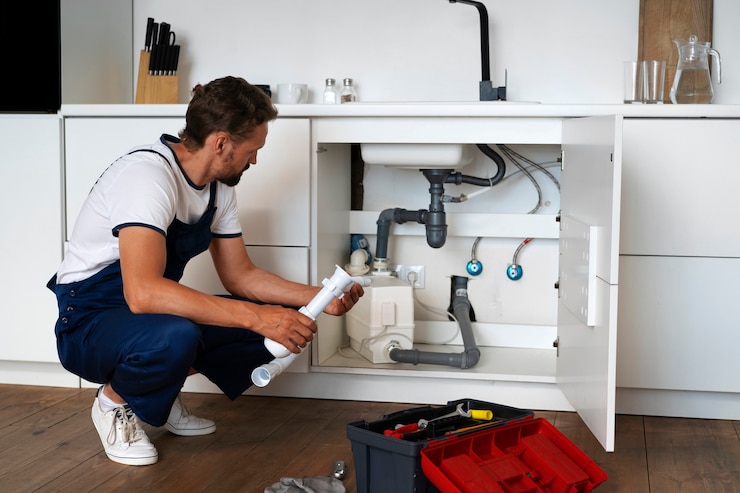Installing or upgrading plumbing doesn’t have to be overwhelming. Whether you’re building a new home or remodeling an old one, understanding the basics of plumbing installation will save you time, money, and stress. This guide breaks down the process and highlights when to DIY and when to hire a pro for the best results.
Understanding the Basics of Plumbing Installation
At its core, plumbing installation involves setting up water supply lines, drainage systems, and fixtures such as sinks, toilets, and showers. Proper installation ensures efficient water flow, waste removal, and long-term durability.
There are two main phases: rough-in plumbing (installing pipes before walls and floors are finished) and finish plumbing (connecting fixtures and appliances). Each step requires precision and knowledge of local building codes to avoid issues later.
Why Professional Installation Is Worth It
Many homeowners think they can save money by doing plumbing work themselves. While small repairs may be manageable, full installations should be left to experts. A licensed plumber ensures everything is installed safely, functions properly, and passes inspection.
Hiring plumbing installation services means you get skilled labor, reliable materials, and work that’s guaranteed. This prevents leaks, water damage, and expensive repairs down the line.
Selecting the Right Pipes and Fixtures
Choosing quality materials is crucial for long-term performance. PEX and copper are common pipe options—PEX is flexible and easy to install, while copper is highly durable but more expensive. Your plumber can help you pick the right type based on your home’s needs and budget.
For fixtures, consider style, water efficiency, and maintenance. Look for WaterSense-labeled products to save on water bills and help the environment. Think ahead—installing efficient fixtures now can lead to big savings over time.
Step-by-Step Installation Overview
Knowing what to expect helps reduce stress during a plumbing installation project. Here’s a simplified version of what happens:
- Site Evaluation and Planning: Your plumber inspects the space and creates a layout.
- Pipe Installation (Rough-In): Water and waste lines are installed before walls are closed.
- Pressure Testing: Ensures no leaks or weak points in the system.
- Fixture Installation: Sinks, toilets, tubs, and appliances are hooked up and tested.
- Final Inspection: Ensures everything meets code and functions correctly.
Timelines vary based on project size, but your plumber will provide an estimate and keep you informed throughout the process.

Tips for a Hassle-Free Installation
- Plan Ahead: Know your needs and communicate clearly with your plumber.
- Set a Budget: Include labor, materials, permits, and a contingency fund for surprises.
- Choose Reliable Products: Don’t cut corners—invest in quality pipes and fixtures.
- Work with Pros: Always choose licensed and insured professionals with good reviews.
- Stay Flexible: Unexpected issues can arise, especially in older homes. Be prepared for adjustments.
Dealing with Plumbing Emergencies
Even the best installations can run into trouble. Burst pipes, clogged drains, or sudden leaks may happen due to shifting soil, freezing weather, or aging systems. In such cases, having access to emergency plumbing services can be a lifesaver.
Make sure your plumber offers 24/7 emergency support and can respond quickly to prevent further damage. Keep their contact info handy, just in case.
Conclusion: Set Your Plumbing Up for Success
Plumbing installation is one of the most important investments in your home. When done right, it provides comfort, safety, and peace of mind for years. From choosing the right materials to hiring experienced professionals, every decision matters.
Take the time to understand the process, ask questions, and work with trusted experts. Whether it’s a full home build or a simple bathroom upgrade, following the right steps ensures smooth, efficient plumbing that you can rely on.

